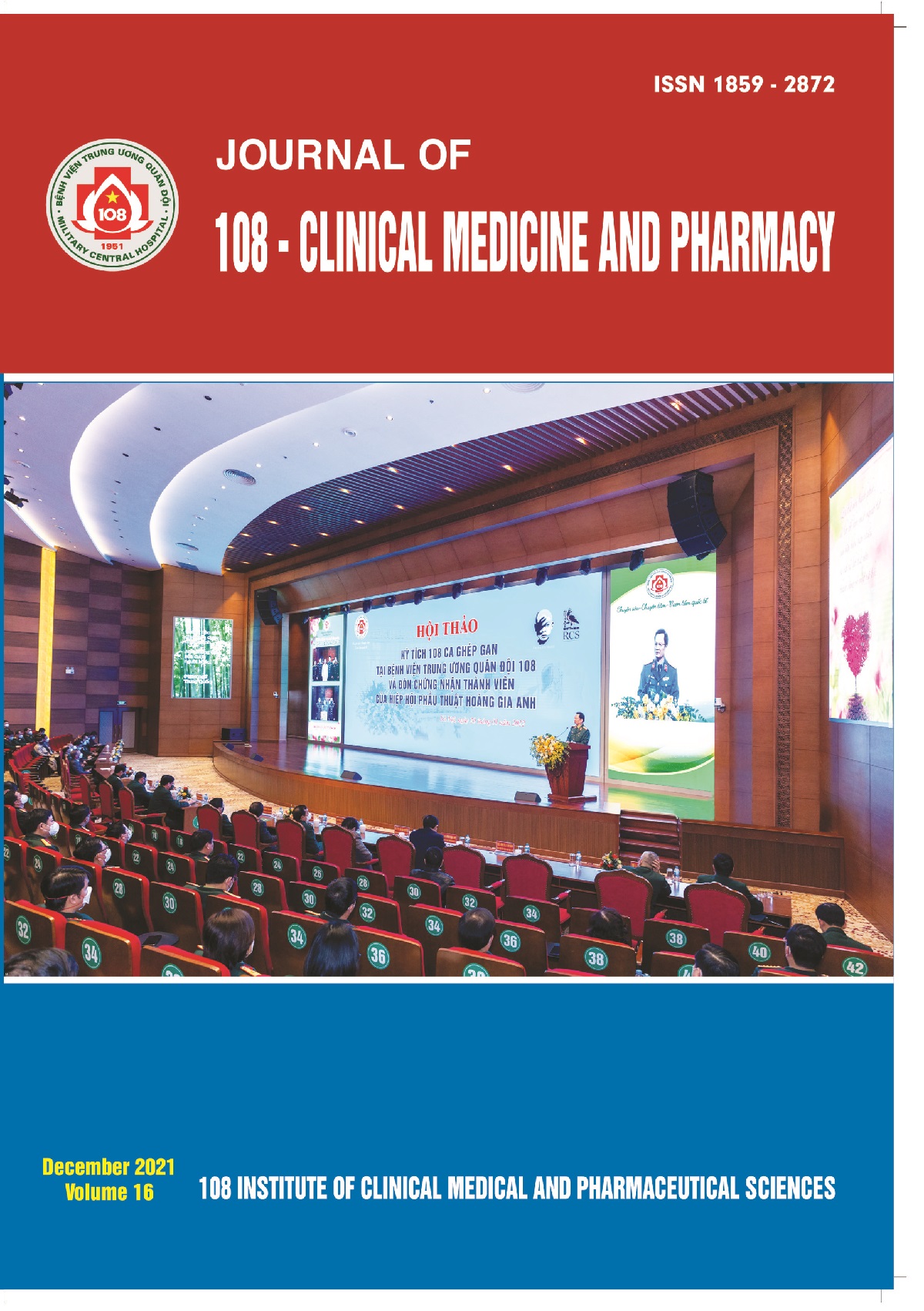Effective evaluation of labor induction by modifier double balloon Foley catheter at 108 Military Central Hospital
Main Article Content
Keywords
Tóm tắt
Objective: To evaluate the efficacy of labor induction by modifier double balloon Foley catheter (MDB) in pregnant women with the indication of vaginal delivery. Subject and method: Longitudinal prospective study on 82 pregnant women at Obtetricts Department of 108 Military Central Hospital from June 2020 to September 2021 with criteria: Pregnancy age was older than or equal to 37 weeks, singleton, vertex presentation, their cervical Bishop score < 6, cervix is unfavorable to detach the amnio membranes, intact membranes, to designate termination of pregnancy by vaginal delivery and consent to participate in the study. Labor induction was conducted by double balloon Foley modifier catheter. Result: With success criteria is defined as Bishop score after labor induction larger or equal 7, the success rate with MDB was 86.6%, the increase of Bishop scores averaged 5.63 points with p<0.001. 7.32% tiny fever was connected to Foley catheters. The cesarean section rate after induction was 14.6%. The vaginal birth rate after the succession of labor induction using combined MDBs was 88.7%. There was not any complication for the women and the newborn babies. Conclusion: Our findings suggest that MDB using labor induction was feasible and high effective procedure as well as without compromising maternal or fetal safety.
Article Details
Các tài liệu tham khảo
2. Boulvain M, Kelly A, Lohse C, Stan C, Irion O (2001) Mechanical methods for induction of labor. Cochrane Database Syst Rev 001233.
3. Sulkowski C, Schneider F, Tessier V et al (2019) Interest of cervical ripening using double balloon catheters for labor induction in term nulliparous women. J Gynecol Obstet Hum Reprod 158(8): 1-4.
4. Caughey AB, Sundaram V, Kaimal AJ et al (2009) Maternal and neonatal outcomes of elective induction of labor. Evid Rep Technol Assess (Full Rep) 176: 1-257.¬
5. Dekker RL (2016) Labor induction for late-term or post-term pregnancy. Women and Birth 29(4): 394-398.
6. Mei-Dan E, Walfisch A, Suarez-Easton S et al (2012) Comparison of two mechanical devices for cervical ripening: A prospective quasi-randomized trial. The journal of Maternal-Fetal and Neonatal Medicine 26(6): 723-727.
7. Solt I, Frank Wolf M, Ben-Haroush S et al (2019) Foley catheter versus cervical double balloon for labor induction: A prospective randomized study. The Journal of Maternal-Fetal & Neonatal Medicine 3(2): 1-8.
8. Organization World Health (2011) WHO recommendations for induction of labor. Geneva: World Health Organization.
9. Policiano C, Mariana P, Diana M et al (2017) Efficacy and safety of foley catheter balloon for cervix priming in term pregnancy. Acta medica portuguesa 30(4): 281-284.
10. Ramirez MM (2011) Labor induction: A review of current methods. Obstetrics and Gynecology Clinics 38(2): 215-225.
11. Sherman DJ, Frenkel E, Tovbin J, Arieli S, Caspi E, Bukovsky I (1996) Ripening of the unfavorable cervix with extraamniotic catheter balloon: Clinical experience and review. Obstet Gynecol Surv 51: 621-627.
12. Tolcher MC Holbert MR, Weaver AL et al (2015) Predicting cesarean delivery after induction of labor among nulliparous women at term. Obstet Gynecol 126: 1059-1068.
 ISSN: 1859 - 2872
ISSN: 1859 - 2872
